The Plain of Jars, Xieng Khouang province (Laos) is one of the places that suffered many fierce American bombings during the war; It is still one of the most dangerous archaeological sites in the world.
Archaeological site with many prohibition signs Departing from the Underground bus station, after an 18-hour journey, including the time for customs clearance at Nam Can border gate, at exactly 12 noon we arrived at Xieng Khouang in Laos. famous place with the name Plain of Jars.
During the Vietnam War, the Plain of Jars was mentioned as a special place to refer to the entire Xieng Khouang plateau, not just the relic containing thousands of ancient jars; where bandit general Vang Pao was appointed governor of Xieng Khouang province during the neutral government of Laos.
From Phonesavanh, the capital of Xieng Khouang, take a tuk tuk for 45,000 kip (about 115,000 VND) for the 7km distance to the first jar field, one of three places to visit.
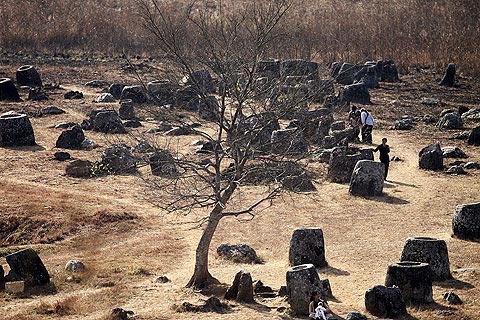 Panoramic view of the Plain of Jars, area 1 from above.
Panoramic view of the Plain of Jars, area 1 from above.
The Plain of Jars consists of three areas. During the war, this was one of the places that suffered many fierce US bombings and to this day is still one of the most dangerous archaeological sites in the world.
Visitors can visit three locations with instructions from MAG (Mines Advisory Group – International Mine Action Organization). However, there are still tourists who do not follow or do not pay attention to the signposts and sometimes casualties still occur.
Some people in our group, while engrossed in taking photos, forgot the red and white safety markers imprinted with MAG, and stepped out of the safety area up to a meter without receiving the necessary reminder. any.
Mysterious fields
There are many legends about the Plain of Jars, but archaeologists believe that these jars are 1,500 to 2,000 years old and were used by the Mon-Khmer people, whose culture remains mysterious today.
In some excavations, the discovery of remains and ashes here has led some anthropologists and archaeologists to believe that these jars may have been used to store the remains and belongings of the deceased according to custom of an ancient Lao people, the Puon people, or containing food.
Meanwhile, some legendary stories of Lao people say that there were giants who once settled in this area. And according to one of the most famous legends and mentioned by many tourists and locals, the ancient king named Khun Cheung created a field of jars to ferment and store large quantities of lao lao rice wine. to celebrate victory after he defeated the enemy.
In the field of Jars number one, there are two large areas where you can admire the stone jars, following the entrance gate about 3-400 m up a hill where the largest jar exists with a diameter of 2.5 m high. 2.57 m weighs tons.
This location has a panoramic view below where there are hundreds of ancient jars of similar size and in particular, there is only one jar that still has its lid, although it has been partially broken.
On the hills, all weeds have been burned and cleared, leaving only a few clusters of jars hidden under the canopy of trees.
Below are some pictures of the jars field:
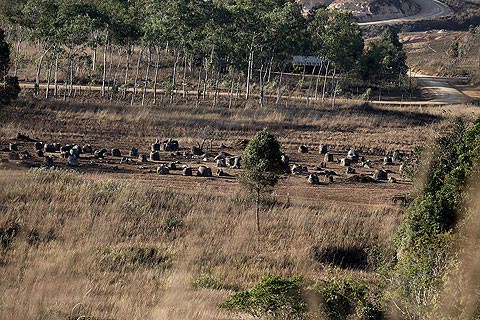
The legend about the stone jars is that these are wine jars that the ancient king Khun Cheung used to toast his troops after his triumph. However, archaeologists are inclined to the hypothesis that the Plain of Jars was a giant cemetery, each jar was a sarcophagus used to bury a human body. Meanwhile, Soulivan Vincent, a Frenchman, a hotel owner in Phonesavanh – who has lived in Xieng Khouang for many years – said that the Plain of Jars area could have previously been a place to transfer goods from other places. Large and small jars can be used to store rice, salt or other goods. Vincent argued: “Xieng Khouang is located at the crossroads of Central Laos. If you want to go to Luong Prabang or Viientiane, you have to stop here.”
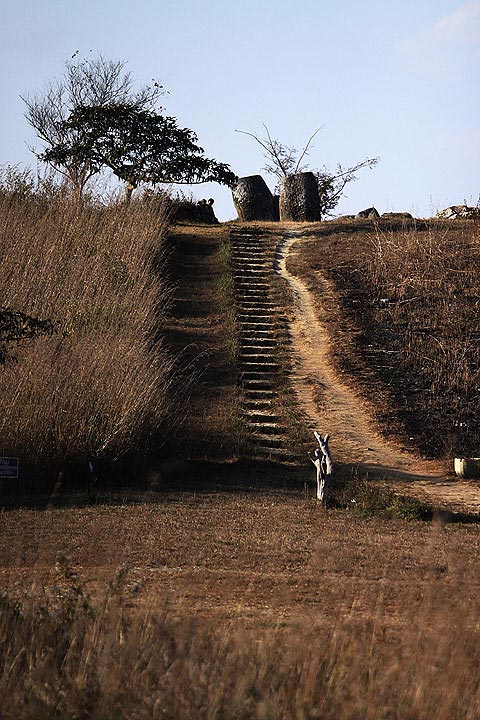
Also during the years of fierce bombs and bullets, tens of thousands of Vietnamese and Lao soldiers fell on this land. Not far from the Plain of Jars in Ban Ang, Vietnamese people coming to Phonesavanh need to go to the Vietnam-Laos Martyrs Memorial.
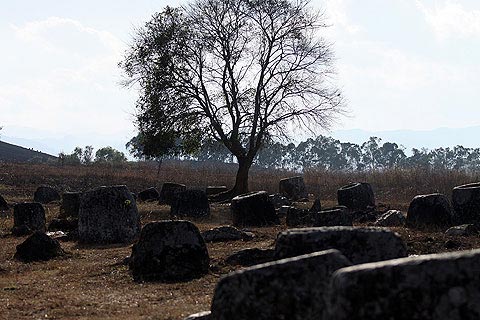
Stretching several hundred meters along the hillside, nearly 400 ancient stone jars, large and small, of all sizes are scattered. No one knows how they were made, when they were there and what they were used for.
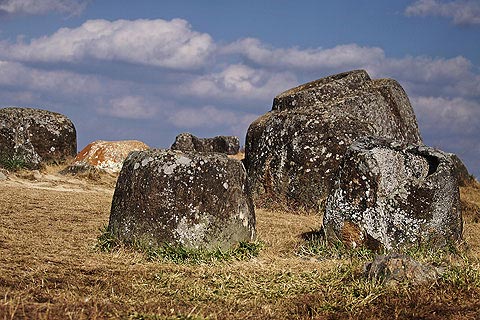
Nearly 2,000 jars standing alone or in groups are scattered in 50 locations in Xieng Khouang province, with shapes 1-3m high and 1-3m in diameter. Their shape is also atypical. The knob is tight, the mouth is straight, the mouth is square, the other is like a melon… Touching the rough rocks, the green “markers” of time lying quietly on the ground, one vaguely feels understand the great historical mysteries it contains.
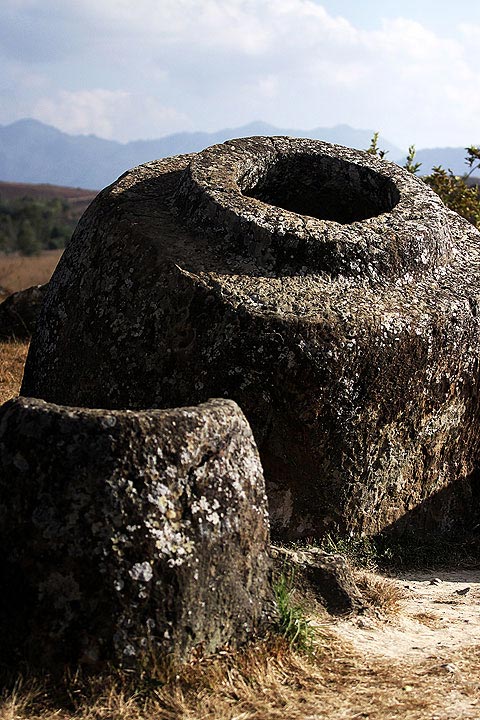
Archaeologists agree that these jars are related to burials, but do not agree on their date. Previously, scientists estimated the age of the jars to be between 500 BC and 500 AD, but recent calculations place them between the 9th and 10th centuries.
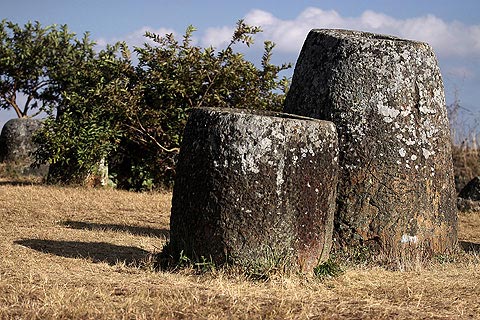
Ms. Julie Van Den Bergh, a member of the MAG organization, said: “Only after the Plain of Jars is cleared of mines, and this takes many years, will archaeologists be able to freely research and come up with conclusions.” Accurate answers to the questions: who makes jars, when and why.
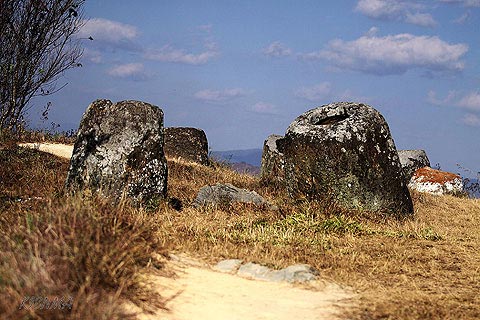
The cluster of jars located on the top of the hill right at the entrance gate has different shapes. Through time and war, many jars were no longer intact and dilapidated. The largest one is 2.5 m in diameter and 2.57 m high, weighing up to a ton. The smallest one is only the size of one person’s hug. Most of the jars have no lids and come in all shapes, square and round, no two are the same.
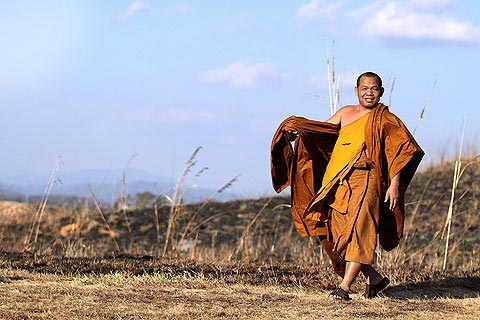
A Lao monk visiting the field of jars. Many years ago, indigenous people still did not know the value of ancient jars. Many people transport jars home to store things or simply to… plant flowers. Only after the relevant authorities issued an appeal did people learn about the great cultural value of the jars and return them to their original location. Currently, the Plain of Jars is being researched and re-surveyed by experts from the UNESCO Organization, marking all the jars so that they can become a world cultural heritage – a stone heritage in Indochina.





